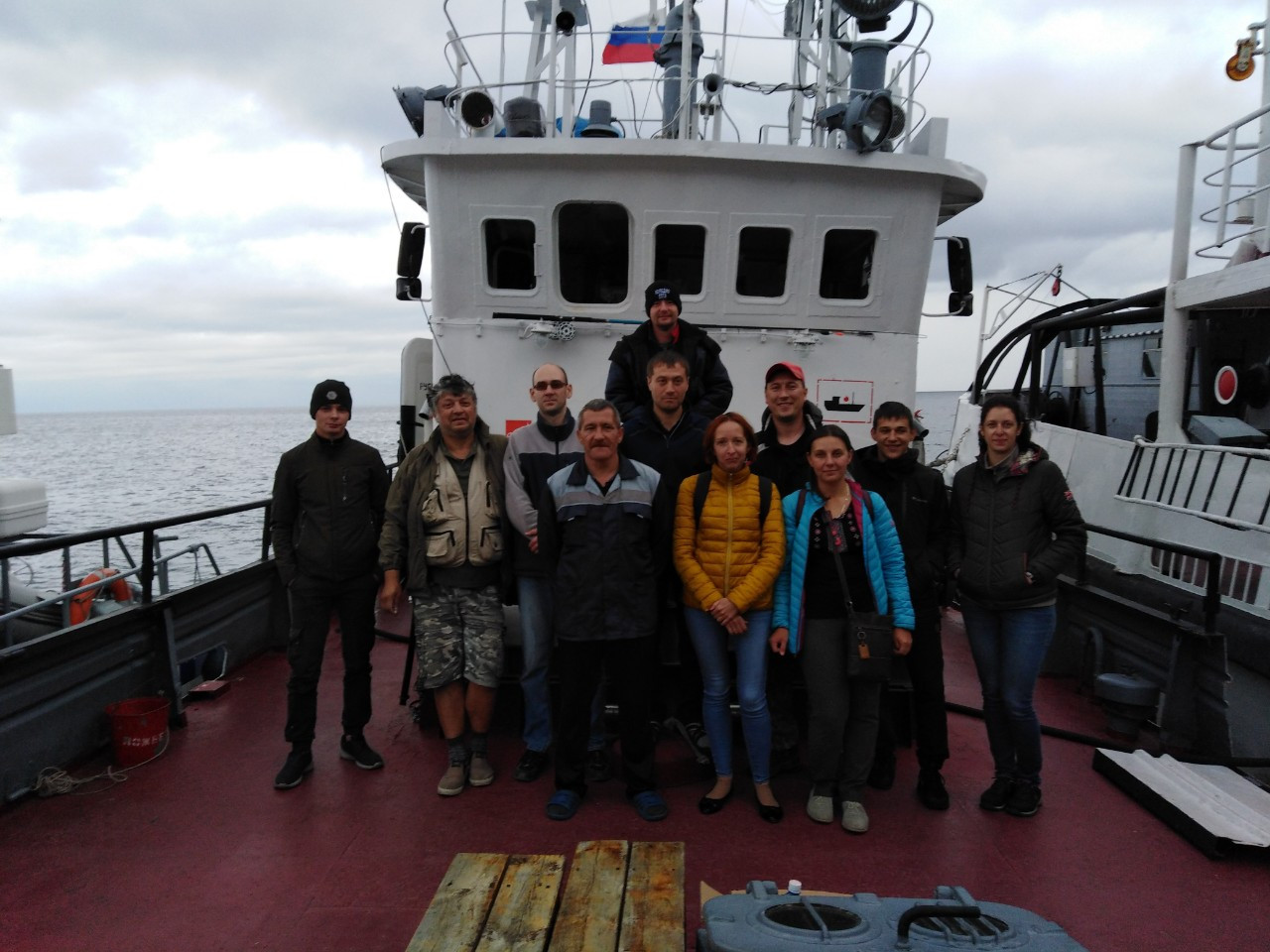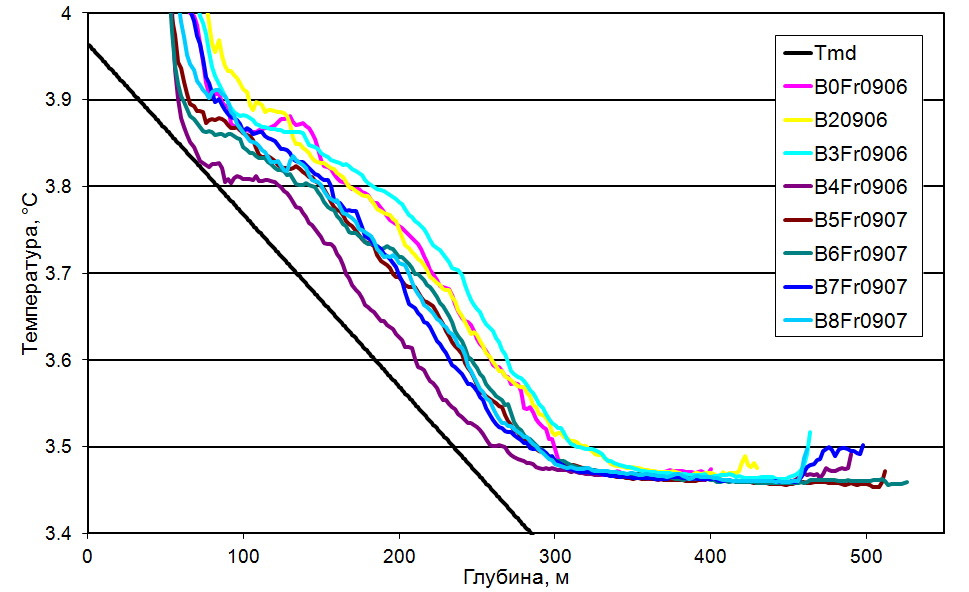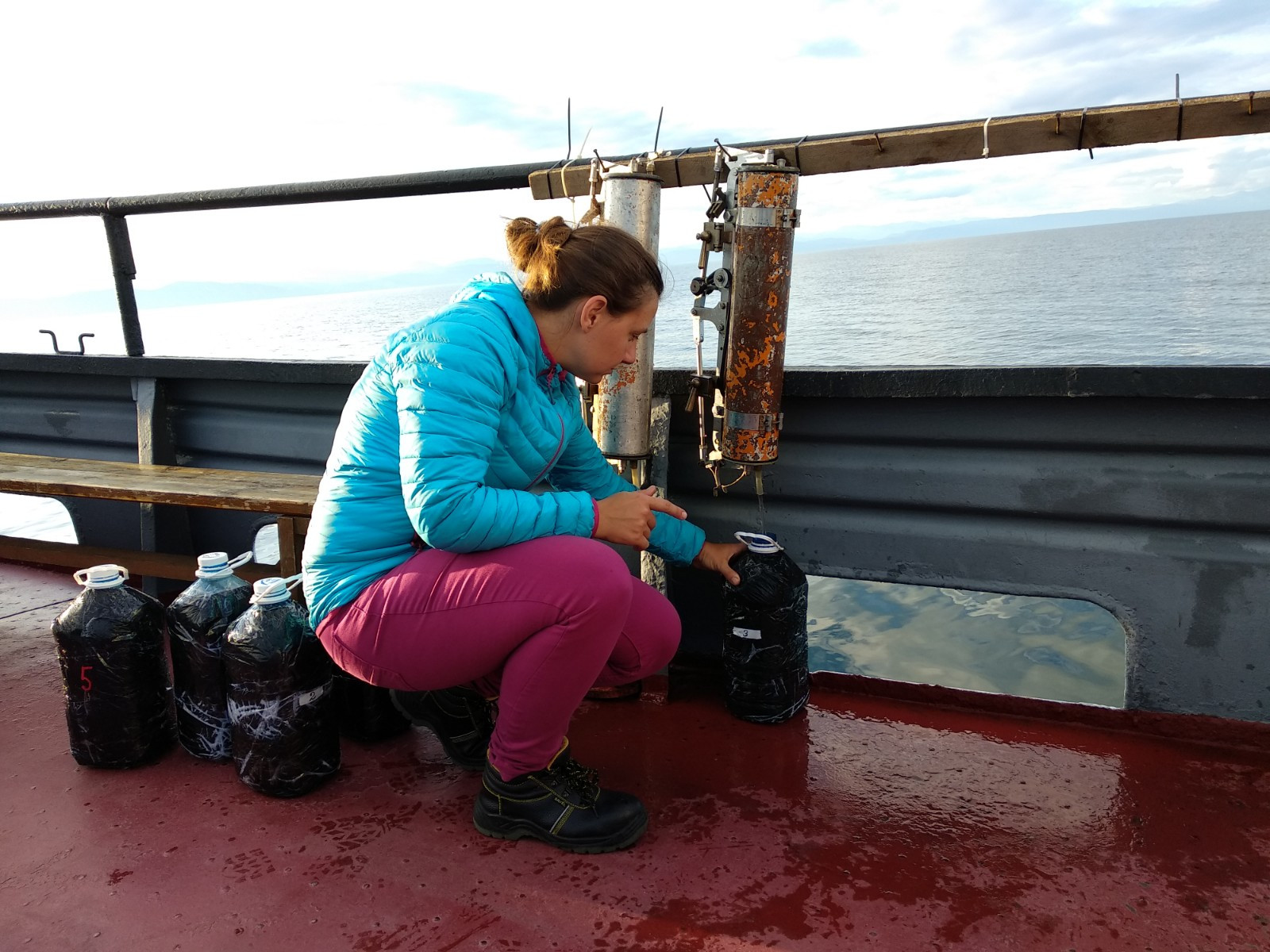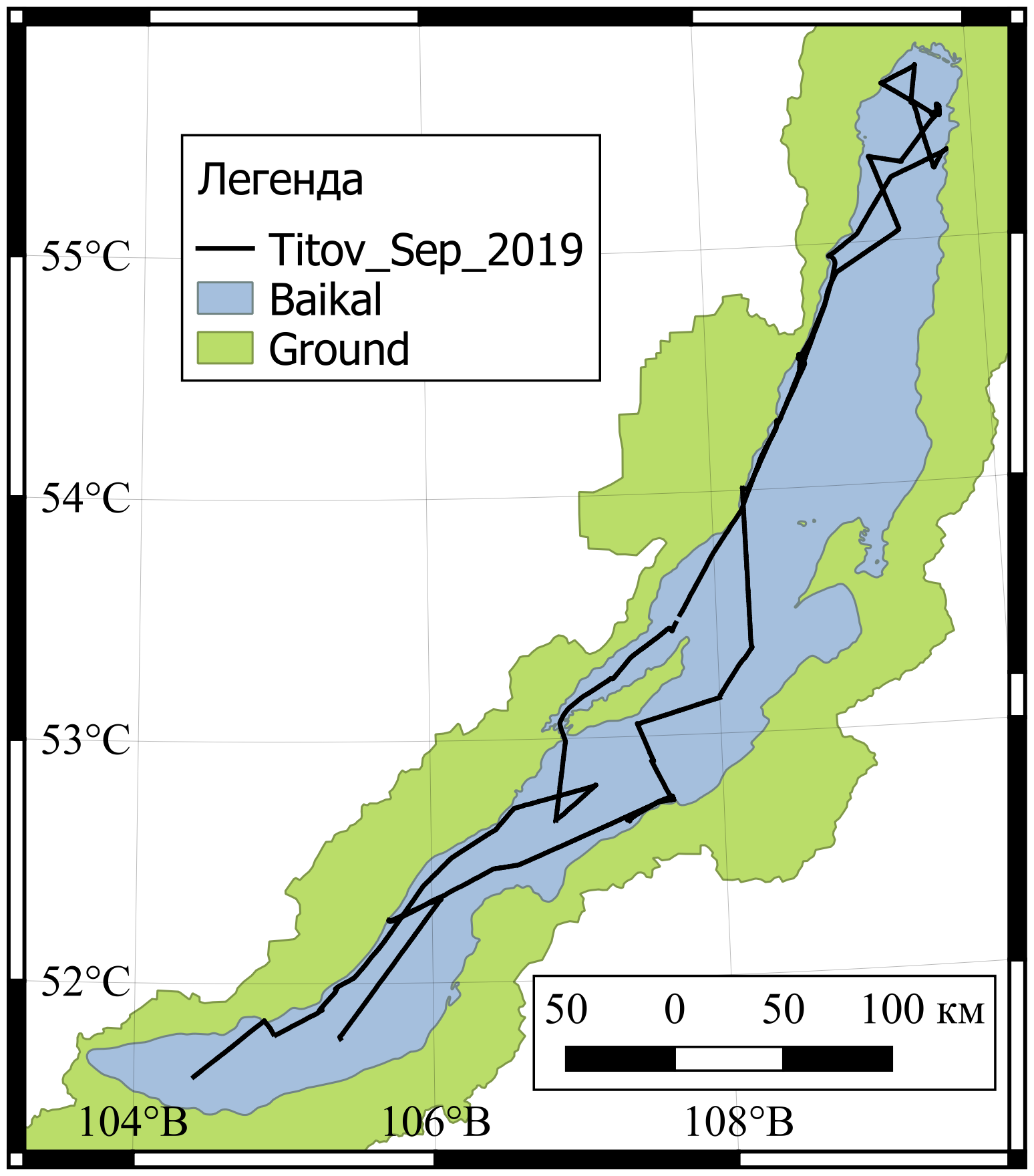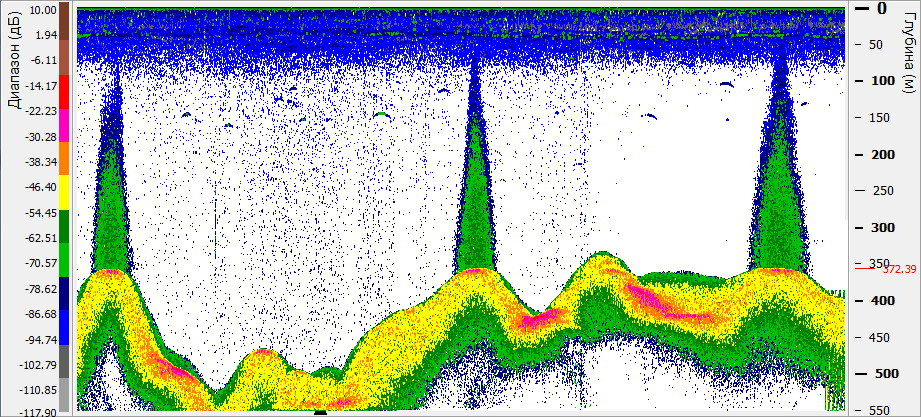Expedition onboard RV “G. Titov”, September 3-11, 2019
The expedition within the framework of the programs “Ecological and Economic Assessment of the Functioning of Freshwater Biocenoses…”, “Microbial and Viral Communities in Biofilms of Freshwater Ecosystems…” and “Assessment and Forecast of Ecological State of Lake Baikal…” was carried out onboard RV “G. Titov”, September 3-11, 2019 throughout the water area of Lake Baikal. The expeditionary team included researchers from A.O. Kovalevsky Institute of Biology of the Southern Seas (Sevastopol).
The aims of the expedition were as follows: 1) to study vertical distribution of the number of plankton algae and picoplankton cyanobacteria as well as patterns of changes in the species composition of phytoplankton at various depths in the pelagic zone of Lake Baikal; 2) to study vertical distribution of hydrophysical and hydrochemical characteristics at the central stations of the longitudinal section.
The water for analysis was sampled with Niskin bathometer from seven different horizons. To determine the depth of water sampling, vertical sensing was performed with a JFE Rinko AAQ-177 probe up to a depth of 100 m; at some stations – an SBE-25 CTD probe up to the bottom. In total, the studies were carried out at 21 stations in three basins of Lake Baikal.
The water for analysis was sampled with Niskin bathometer from seven different horizons. To determine the depth of water sampling, vertical sensing was performed with a JFE Rinko AAQ-177 probe up to a depth of 100 m; at some stations – an SBE-25 CTD probe up to the bottom. In total, the studies were carried out at 21 stations in three basins of Lake Baikal.
In Northern Baikal, a detailed hydrophysical survey of the area near Frolikha Bay was performed. The near-bottom water there had increased temperature in comparison with background areas. The thickness of the water layer with the increased temperature was approximately 50 m. The hydroacoustic survey did not reveal any relief features in this area.
In Central Baikal, the gas seepage, which was discovered by the researchers from Laboratory of Lake Baikal Geology at Limnological Institute, was investigated using hydroacoustic complex. This seep is located on the boundary of the gas-hydrate stability zone, and at its foot, there are gas hydrates in the surface bottom sediments. The hydroacoustic survey and assessment of gas flow from this seep were performed.




